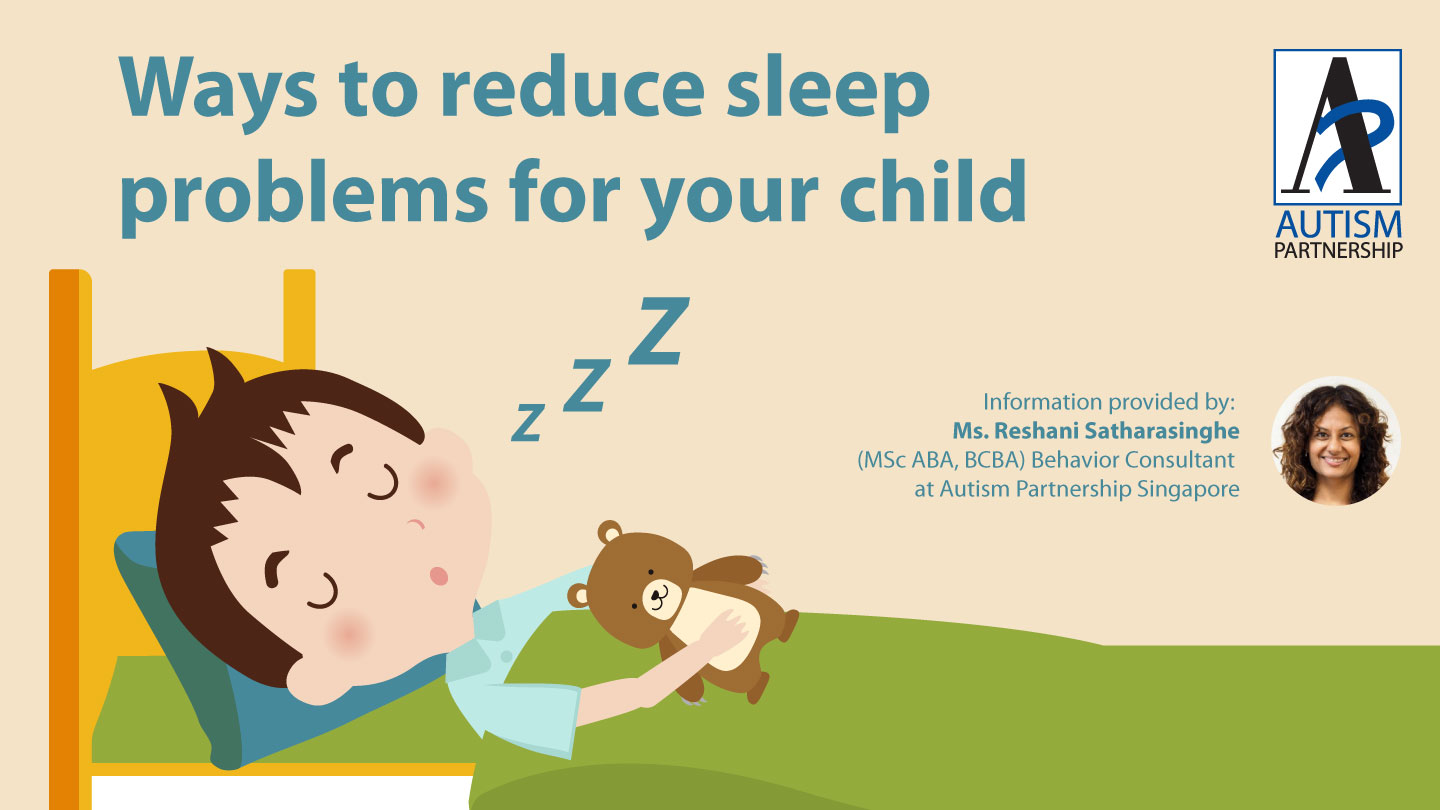“My son is 7 years old with autism. He is not willing to sleep on his own and needs me to sleep with him every night. If I am not back from work, he will sleep with his helper. How can we make him a more independent sleeper?”
As a parent or caregiver, bedtime can be difficult if your child is having issues going to bed, staying asleep, and getting back to sleep. Your patience can be tested through long hours of frustration before your child goes to sleep. You end up either sleeping in your child’s bed or having them sleep in yours. Sleep disturbances can significantly disrupt your household. You may have insufficient energy in the day due to battles over bedtime as a parent or caregiver. Other children at home may also have their sleep disturbed.
Your child’s insufficient sleep may result in daytime sleepiness, which decreases their ability to learn new critical skills. Behavioral issues such as hyperactivity, inattention, and aggression may surface as well. For a child receiving therapy or attending school, this can greatly affect his or her learning.
As we all know, sleep habits are hard to change. As adults, we may be disturbed when we sleep in a different bed, on another side of the bed, or with a different pillow. Naturally, if your child is used to sleeping with you or going to sleep late at night, he or she will resist any change in their routine. The earlier the problem is addressed, the easier it will be to help your child sleep independently. This way, everyone in the family will be able to get a good night’s sleep.
Before you begin:
Be sure that you prepare yourself by getting as much sleep as you can beforehand, or catch up on your sleep during the day since you may not be able to have a restful sleep for several days. Choosing a period when you can offer consistent intervention is important.
Next, follow the steps below to reduce sleep problems for your child:
Step 1: Setting up a nighttime routine that eases your child to sleep

For example, a typical nighttime routine can start with giving your child a calming hot bath, followed by putting on pyjamas and brushing teeth. You can end the night by reading a bedtime story or listening to soothing music. These nighttime routines will promote a consistent sleep habit and make it easier for your child to fall asleep.
Step 2: Selecting the proper bedtime

Step 3: Developing a “sleep” object to help your child fall back asleep during the night

Step 4: Keeping your child in bed

Step 5: Sleeping in one’s own bed to encourage independence and autonomy

This process is similar to the previous step on putting your child back to their bed with the least intrusive method. As long as your child is of the appropriate age, you can let him or her join you in bed on weekend mornings to watch cartoons. You may also schedule a particular time of day for him or her to snuggle in bed with you.
Step 6: Nap times

Nevertheless, as we discussed in step 2, it is best to reduce or eliminate naps so that your child is more tired at night.
Frequently Asked Questions (FAQ)
Answer: Rather than try to directly make him sleep, you could prevent all other non-sleep activities from occurring. For example, keep away any toys, snacks, beverages, and keep the lights off. By keeping the environment quiet and dark, this is a good suggestion of sleep.
Our advice is to put your child back in his or her own bed and then provide the care and comfort there.
Rather than try to directly make him sleep, you could prevent all other non-sleep activities from occurring. For example, keep away any toys, snacks, beverages, and keep the lights off. By keeping the environment quiet and dark, this is a good suggestion of sleep.




